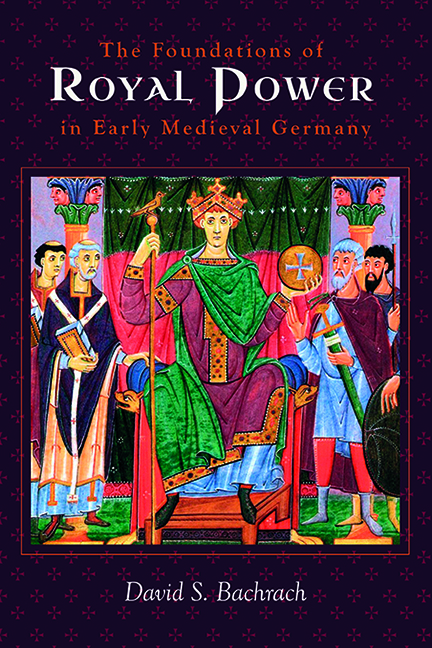 The Foundations of Royal Power in Early Medieval Germany
The Foundations of Royal Power in Early Medieval Germany Book contents
- Frontmatter
- Dedication
- Contents
- List of Illustrations
- Acknowledgments
- List of Abbreviations
- Maps
- Introduction
- 1 The Economy of Carolingian East Francia and Ottonian Germany
- 2 Material Assets of the Royal Fisc
- 3 Taxes, Tolls, and Other Regalian Rights
- 4 Ecclesiastical Resources at the Ruler’s Disposal
- 5 Toward an Analysis of Royal Expenditures: The Iter Regis and the Cost of Defense
- Conclusion
- Appendix 1 Fiscal Properties held by the Rulers of East Francia and Germany, 887–1106
- Appendix 2 Fortifications held by the Royal Government during the Reigns of Henry I and Otto I
- List of Key Terms
- List of Key Dates
- Bibliography
- Index
Conclusion
Published online by Cambridge University Press: 16 July 2022
- Frontmatter
- Dedication
- Contents
- List of Illustrations
- Acknowledgments
- List of Abbreviations
- Maps
- Introduction
- 1 The Economy of Carolingian East Francia and Ottonian Germany
- 2 Material Assets of the Royal Fisc
- 3 Taxes, Tolls, and Other Regalian Rights
- 4 Ecclesiastical Resources at the Ruler’s Disposal
- 5 Toward an Analysis of Royal Expenditures: The Iter Regis and the Cost of Defense
- Conclusion
- Appendix 1 Fiscal Properties held by the Rulers of East Francia and Germany, 887–1106
- Appendix 2 Fortifications held by the Royal Government during the Reigns of Henry I and Otto I
- List of Key Terms
- List of Key Dates
- Bibliography
- Index
Summary
At this point it should be clear that the Ottonians were extraordinarily wealthy. The overall demographic trend in the lands ruled by the Ottonians north of the Alps was positive. Indeed, as numerous archaeological studies have demonstrated, in many regions population growth was quite rapid, leading to extensive deforestation and the establishment of numerous new agricultural settlements as well as communities that were focused on industrial-scale production of raw materials and a host of finished goods. This population growth was also mirrored in urban sites, which demonstrated considerable growth, including the expansion of their walls at great cost. The Ottonians were well situated to take advantage of the virtuous cycle of demographic growth, increasing aggregate surpluses, concomitant specialization, and consequent gains in productivity. Of primary importance in this context is that Ottonian rulers were the absolute largest landowners in their realm, with enormous numbers of fiscal estates that rivaled in variety, complexity, and number those held north of the Alps by Charlemagne and Louis the Pious.
In addition to benefitting from the increasing size and productivity of their own estates, the control exercised by the Ottonian rulers over a wide range of “profits of kingship” meant that they also were able to take advantage of the good fortune of their subjects. The aggregate increases in agricultural production, industrial production, and craft activities led to the establishment of large numbers of new markets throughout the lands ruled by the Ottonians with concomitant increases in revenues from market taxes and tolls. The enormous upsurge in both silver mining from the 960s onward, controlled directly by the Ottonians through their ownership of the Harz mines, and the increasing production of coinage, further expanded the income flowing into the ruler's hands. So too did the extensive control exercised by the Ottonians over the right to hunt and the right to use resources in lands declared to be forestae by the government. Thus, for example, as the overall numbers of pigs and cattle within the Ottonian realm grew to support the expanding population, so too did the need to make use of woodlands and meadows to feed these animals, bringing further income into the royal coffers. Similarly, the increasing need for timber resources also benefitted the king.
- Type
- Chapter
- Information
- The Foundations of Royal Power in Early Medieval GermanyMaterial Resources and Governmental Administration in a Carolingian Successor State, pp. 271 - 278Publisher: Boydell & BrewerPrint publication year: 2022
